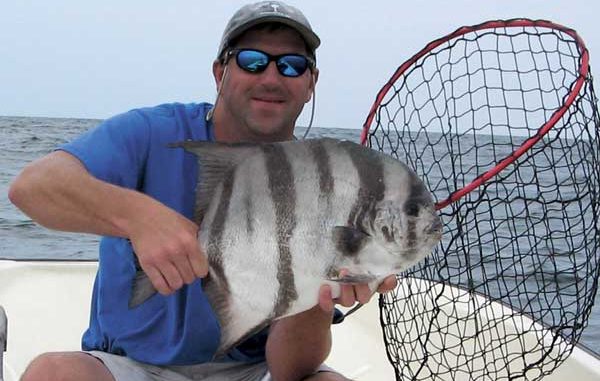
A little know-how is all it takes to put you on the happy hunting grounds for South Carolina spadefish.
South Carolina sportsmen can often enjoy the best of both the hunting and fishing worlds rolled into one. Hunting, finding and catching spadefish can certainly be one of those mixed-bag adventures.
Spadefish gather off the South Carolina coast throughout the summer. They are often found in schools that contain scores, even hundreds, of fish. Plus, a spadefish habit that appeals to fishermen is their tendency to be found near the surface. But the key to fishing success is hunting, then properly fishing, just such an area.
For spadefish anglers, knowing the general location of their quarry is almost a given. Throughout the summer, they are going to be hovering in, around and above the sunken wrecks and artificial reefs that dot the coastline. But just as in knowing the proximity of a big buck, you still need to put your eyes on your quarry to seal the deal. Knowing the general location is only part of the adventure.
A primary way to catch spadefish is to see them and cast your bait not merely in the direction of the big schools of fish, but actually to specific fish. If you do it correctly, a slow-moving spadefish will glide to your offering and subtly slip it into its mouth.
If you haven’t dealt with spadefish, you may be caught off guard about what happens next.
When you set the hook on what may appear to be a gentle fish with a lazy attitude, your world gets quickly turned upside down.
Mike Cox of Awendaw has fished for spadefish for many years and enjoyed this outstanding fishery long before many other anglers discovered their superb recreational qualities. Cox said that first spadefish he hooked ended up hooking him on the sport forever.
“One of the tendencies of spadefish is to swim near the waters surface and cruise along in big schools,” Cox said. “Often the fish will be circling the area in what seems to be a slow motion manner.
“The first time I went spadefishing, I anchored on one of the artificial reefs as a friend had told me I should. About mid-morning, I saw the school of spadefish I’d been told about. I cast the bait in front of the lead fish, and as the un-weighted piece of shrimp slowly sank, the spadefish seemed to glide up to it, and the bait simply disappeared into the mouth of the fish. There was no aggressive bite; the small chunk of shrimp just disappeared.
“At this point, I did not think there was going to be much excitement to this sport, right up to the point I first set the hook,” Cox said. “When I set the hook, this fish that may have weighed five pounds nearly snatched the rod out of my hand and started ripping drag off the line liked I’d hook a monster redfish on light tackle.
“I was actually using medium tackle with 17-pound test line. The drag screamed for a while, and I had to work him to the boat three times before finally getting the net under the first fish.
“By the time I’d landed the first one, I was arm weary. But the school of fish stayed up and active for several hours, and I caught fish on most every cast for as long as I could stand it. It was one of the few times I ever got tired of catching fish before they got tired of biting.”
Marvin Jackson of Spartanburg is another fisherman who has experienced the thrill of a spadefish. Jackson generally fishes out of the Charleston area, and he said spadefish was the first fish that ever made him holler “Uncle!” in terms of putting a rod down while the fish were still biting.
“I told my buddy that introduced me to spadefish fishing that I never had, and never would, set a rod down and rest while the fish were biting,” Jackson said. “But after twos straight hours of catching one spadefish after another, I did holler ‘Uncle!’ and set the rod down.
“But the amazing thing was, I rested the rod on the side of the boat with the hook apparently dangling in the water. There must have been a tiny piece of bait left on it, because as I sat there resting my weary arms, another spadefish snatched the rod out of the boat. That made a confirmed spadefish angler out of me.”
Jackson said there are other things about fishing for spadefish that makes the sport so much fun for just about anyone.
“First, while you can use a big offshore boat, you don’t need one to enjoy spadefishing,” Jackson said. “You do not need all of the fancy equipment often associated with offshore fishing. With good sea conditions, we’ve gone in 16-foot johnboats and had a great time.
“Plus, the bait used is very easy and uncomplicated. One of the favored baits is jellyfish (balls), which we usually pick up on the way out. They’ll be floating along as we’re motoring near the shore. We’ll just look for them and scoop them up in a net. However, it’s no big problem if you don’t find any jellyfish. As a backup, we’ll have shrimp and squid in the cooler, both of which will get a spadefish to bite in a heartbeat. You do need to peel the shrimp before using it.”
According to Cox and Jackson, while the action can be outstanding, paying attention to certain tips and tactics will enhance your success. Jackson said that hunting the fish down and having patience is one of his keys to success.
“There’s good information on the (SCDNR) website about where the artificial reefs are located,” Jackson said. “This is the first basic information you need. The spadefish will be located around these underwater wrecks and reefs throughout the summer. Plus, there are other offshore maps that show the locations and coordinates very precisely. Once you get on one of these reefs, you’ve got a lot of the work accomplished.”
Cox said that an important consideration is not just anchoring on a reef, but doing it correctly so your bait can be presented properly.
“The first thing I do when I arrive at the reef I’m going to fish is to drop a marker and let it fall to the bottom,” Cox said. “One of the biggest problems I’ve seen other fishermen encounter while trying to catch spadefish is to not anchor properly.
“With the current and wind, you might drop your anchor on the reef, but the current and wind combination may push your boat totally out of position,” he said. “By using the marker, I can get a good feel for how the boat will settle before stopping. Then, when I anchor, my boat will be positioned right above the wreck.
“While the spadefish may seem to be swimming around near the waters surface in a random manner, they are not doing anything random. They will still be oriented to the reef below, but they will just be at the top of the water column. If your boat drifts out of position, you might even see the fish at a distance, but you won’t be within effective fishing range.”
Cox said that proper anchoring also enables him to fish effectively for spadefish that are not near the surface.
“A common thought by many anglers is that there’s no need to get to the reefs until late morning or mid-day,” he said. “While the fish usually don’t rise to the surface until the sun is high in the sky, you can catch them even in the early morning.
“One of my favorite tactics is to get there early before others arrive. When anchored properly, I’ll be right over the reef and can drop my bait right down on the top of it, or on the downcurrent side. I’ll experiment at different depths, but by dropping the bait down to 10 feet, 20 feet and so on to the bottom, we’ll hook into spadefish long before they get near the surface later. The fish are there, and they will bite early.”
Cox said that identification of a spadefish is quite easy. The SCDNR website has photographs that would be a good starting point for fishermen.
“They are a beautiful fish, typically with several striking black vertical bars contrasting against a silver body,” Cox said. “The spadefish we catch at the offshore reefs will average about five to six pounds, with fish frequently weighing up to nine or 10 pounds.
“Smaller spadefish can be caught inshore and nearshore around wrecks and other bottom objects,” Cox said. “However, for consistent action on good-sized fish, we go out to a water depth of at least 45 to 50 feet before we stop on a reef. This usually puts us in the right area for the adult fish. But you can go out to 100 feet on the reefs and do well.
“The reefs closer to the shore are the most popular ones, because even small boats can get there on many summer days. To get away from crowds on the weekend, if you have a larger boat, just go to reefs further offshore. Spadefishing has become a very popular activity.”
Jackson said that while even a sloppy bait presentation will get sometimes produce bites, there are ways to do it effectively.
“With so many fish around the bait, it’s hard not to hook up with a spadefish on most days,” Jackson said. “But we’ve found that using a 1/0, short-shank Eagle Claw hook on a 4-foot leader below a black or non-shiny swivel works best. The swivel we use is black, so it will not be overly obvious. Sometimes spadefish can be very picky about the tackle used. When they are in that type of mode, it can be extremely frustrating. You can see dozens of fish near the boat, but they will not take the bait. Usually, it’s because of the terminal tackle.
Cox prefers medium-weight spinning tackle with 15- to 20-pound test line.
“Because of the occasional picky nature of spadefish, I use the Trilene Big Game green line,” he said. “I keep my tackle as subtle as possible. The spinning gear is just easier on the arms when you constantly fight these fish for hours.
“Also, we use other tactics to help us get into the fish,” Cox said. “When we pick up jellyfish on the way out to the reefs, we’ll often rig one up when we get there and put it on line about 15 to 20 feet behind the bait. The spadefish will be attracted to the jellyball and will actually move in to feed on it. We’ll cast bait right to them, and they are usually quick to take it.
“Also, we’ll sometimes hook up a jellyball on a big saltwater fishing rig with heavy weight and drop it right down to the top of the wreck we’re fishing,” he said. “Then we’ll slowly reel it in. We’ll often actually bring the spadefish from the deep water to the shallow where we can see them. Ditto for casting the jellyball out with no weight to fish we can see that are just out of casting distance. Reel the jellyball in slowly near the surface, and often the spadefish will follow to within easy casting distance.”
Cox also has other tricks up his sleeve for spadefish.
“If the fish are biting slowly and in a finicky mood, patience is your biggest ally,” he said. “They are typically not very aggressive anyway, so when a fish does ease up to your bait, don’t snatch it away trying to be aggressive. Let the fish nibble on and pick at the bait. Be patient and it will eventually begin to swim off. I’ll let the fish move off a bit, and when the line gets tight I snap my wrist to set the hook. You need a quality spinning reel because they’re going to pull drag. The reel needs a smooth drag or a surging spadefish will pop your line.
“I have a friend who primarily fishes freshwater, and he tried to backreel the fish as he would a freshwater largemouth. He learned pretty quickly that you have to rely on drag. These fish go wild when hooked. I also strongly recommend having a big landing net to get them in the boat. The fish’s small mouth and body shape makes hand-landing difficult.”
Jackson said he’s noted a similarity between spadefish and dolphin; being a school-oriented fish hooking a spadefish will often excite other fish in the school.
“When we get into the fish, we try to keep one hooked and in the water, the same way fishermen do with dolphin,” Jackson said. “This does excite the fish and makes the others much more willing to bite. It isn’t always essential, but if you have three or four fishermen, it’s a great technique and pretty easy to ensure someone is constantly hooked up with a spadefish.”
According to SCDNR regulations, the creel limit on spadefish is 20 per person per day, and there is no closed season.
Cox said that spadefish are a good-eating species, but he also enjoys the catch and release aspect of the fishery.
“We’ll typically keep some for eating,” he said. “But it doesn’t take long to get plenty for the table, so releasing the fish is a good practice. It seems that more fishermen are beginning to do that, which is good for the long-term for this fishery resource.”
May is really the very beginning of the season on spadefish, which will stay on reefs and wrecks all summer — almost until hunting season opens. You may discover that the sport of spadefishing becomes so addictive you’ll end up hunting for, and catching, these fish all summer.

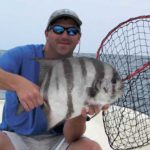
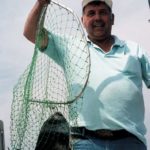

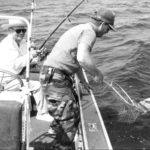
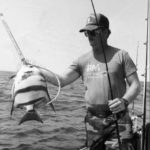




Be the first to comment